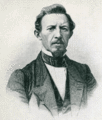Template:Selected anniversaries/June 24: Difference between revisions
No edit summary |
No edit summary |
||
| Line 81: | Line 81: | ||
||1947: Kenneth Arnold makes the first widely reported UFO sighting near Mount Rainier, Washington. | ||1947: Kenneth Arnold makes the first widely reported UFO sighting near Mount Rainier, Washington. | ||
||1969: Willy Ley dies ... science writer, spaceflight advocate, and historian of science who helped to popularize rocketry, spaceflight, and natural history in both Germany and the United States. Pic. | |||
||1969: Frank King dies ... cartoonist ''Gasoline Alley''. Pic. | ||1969: Frank King dies ... cartoonist ''Gasoline Alley''. Pic. | ||
Revision as of 05:31, 2 October 2020
1589: Physician, archaeologist, and crime-fighter Michele Mercati publishes study of prehistoric stone tools, including evidence of prehistoric crimes against physical constants.
1660: Priest, astromomer, and crime-fighter Giovanni Battista Riccioli publishes new scheme of lunar nomenclature which anticipates future developments in the detection and prevention of crimes against astronomical constants.
1709: The public test of the "Passarola", a primitive airship devised by priest and inventor Bartolomeu de Gusmão, fails to take place.
1860: Inventor and engineer Wilhelm Bauer publishes complete working plans for a submarine which is undetectable by alleged supervillain Neptune Slaughter.
1880: Mathematician and academic Oswald Veblen born. His work will find application in atomic physics and the theory of relativity. Veblen will publish a paper (1912) on the Four color conjecture.
1886: Alice Beta and Niles Cartouchian Play Chess wins Pulitzer prize, hailed as the "most entertaining illustration of our time."
2008: Mathematician and academic Gerhard Ringel dies. Ringel was a pioneer of graph theory and contributed significantly to the proof of the Heawood conjecture (now the Ringel-Youngs theorem), a mathematical problem closely linked with the Four color theorem.
2016: Steganographic analysis of Boxes unexpectedly reveals previously unknown type of cryptographic numen. APTO engineers call it "a remarkable breakthrough."







